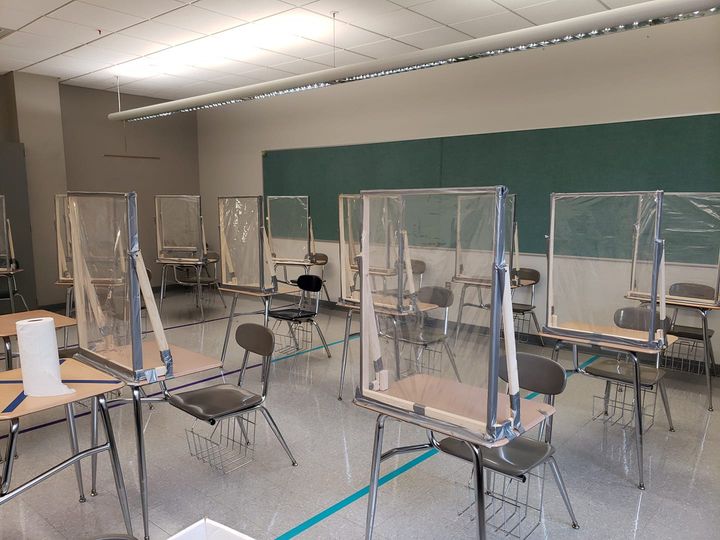Like many educators, New Milford teacher Dr. David Mirto is worried about how the return to school might impact his family and his own health.
“I have students both in front of me and virtually at the same time, and I’m concerned about two things in particular,” the high school business teacher explains. His school, which has been divided into two cohorts, has been operating on a hybrid learning model with synchronous learning—though all schools in the district are currently closed for two days due to a case of COVID-19.
“First,” he says, “is the possibility of bringing COVID-19 back to my 92-year-old father, a veteran of both World War II and the Korean War. He is active, lives a full life, and is the healthiest man I know. It would absolutely kill me if he passed from this because I brought the infection to him. Second, I worry about any long-term effects of the disease on my own personal health. I plan on following my father’s example of living a long, fulfilling life, and the unknowns of this disease could put a stop to that.”
Taking matters into his own hands—literally—Mirto has constructed clear safety barriers for every desk in his classroom.
“I have a small woodshop at my house with some basic tools, and I sketched out a design for a desk shield,” he says. Using a saw, staple gun, duct tape, and screwdriver, he made 30 shields out of cellophane and wood frames that attach to students’ desks as well as his own.
“Initially, the district was not supportive of this endeavor,” Mirto says, as an administrator raised the issue of inconsistencies between classrooms. Concerned that he would be forced to remove the desk shields that offered extra protection, the teacher reached out to his CEA UniServ Representative for advice.
“I want to work,” he told UniServ Rep Sue Fulleton, “but I want to feel safe as well.”
With Fulleton’s help, he contacted his primary building administrator and asked for a concession. The shields were allowed to stay.
“After Dave explained his situation to me, the two of us worked on a letter to his principal outlining his concerns about health and safety in his classroom,” Fulleton says. “We suggested a meeting with the principal. Whether it was the idea of meeting with me or a clarification of how the classroom was safer for all, Dave was allowed to keep the desk shields in his classroom. Teachers returning to in-person learning face numerous risks, and we are here to help ensure their safety and comfort.”
Not sure if your school is COVID-compliant or safe? Say something. Talk to your building representative, local president, or CEA UniServ Rep. Your union is here to protect you.







